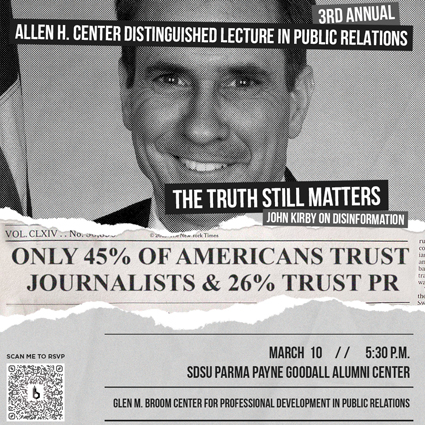How Colette Mauzeralle from Contour PR + Social Uses Theory in her PR Practice
When we see a PR pro out there crushing it, we can’t help but to crush on her a little ourselves. This feature on Colette Mauzeralleis an example of the people of PR who are pushing the status quo.
“Times continue to change, and so does the way public relations is practiced,” said Colette Mauzeralle, founder of Contour PR + Social in San Diego. “There is sometimes this image of the hyper-social publicist who networks her way to great publicity, but industry-wide we’re a business-minded bunch who consider all aspects of creating successful PR campaigns, with building relationships just one component, one skill of many.”
Mauzeralle points to the television show “Sex and the City” for the misconception that publicists are ex-sorority girls who live their lives schmoozing and socializing to get their stories published. Mauzeralle was quick to disprove the negative connotation surrounding public relations. She defines public relations as a strategy to get the attention of target audiences, making them listen, aware and interested. Public relations goes beyond the scope of sending press releases and pitches to traditional media to secure press placements.
With the evolution of today’s digital media landscape, public relations now includes the adoption of social media platforms and collaborations with social media influencers.
Contour PR + Social is a public relations agency serving clients in culinary, lifestyle and commercial real estate industries.
Mauzeralle’s average day in the office consists of traditional public relations methods and practices: drafting run sheets for her clients’ morning appearances on local television news, clipping press placements for clients and connecting with and pitching to journalists and reporters. The tasks move on to more modern strategies and tactics: pitching to influencers via Instagram direct messages and creating niche influencer lists for potential client partnerships.
How to break through the noise in PR
A classic mass media theory that had gone dormant for decades is now reemerging and changing public relations engagement.
The two-step flow theory is classically known as using opinion leaders as a main source of information for the masses. Here is how it works: the media messages first reach opinion leaders, then opinion leaders share the information with their networks. The flow goes from opinion leader to the masses. As media and literacy became more prevalent, the role of influencers reduced.
Today, we face an endless barrage of messages that make it difficult to know where to focus our attention. Opinion leaders are reemerging as influencers, and their roles in sharing information and persuading others are increasing. Public relations finds itself engaging influencers in many of the same ways that engaged traditional media, with that same goal of reaching the masses. Consumers trust people, and they trust that influencers will be honest, genuine and authentic with their content. This trust in influencers elevates the power of word-of-mouth marketing, turning more brands toward influencer partnerships.
The rise of influencer marketing and influencer collaborations does not mean pitching to traditional media is futile. It means that there are more opportunities to gain coverage and reach wider audiences.
“I believe in a good old-fashioned article in a newspaper or a morning news segment,” said Mauzeralle. “I also believe in modern ways of doing public relations, and that you kind of have to hit both [traditional and modern media] in most cases.”
Publicists use the agenda-setting theory when their clients’ key messages are published in traditional and modern media. Messages in the media may not necessarily tell audiences what to think, but they may tell them what to think about.
Publicists – and influencers – play a vital role in choosing and displaying news. The messages they choose to display creates a certain reality for their target audiences.
If publicists share a skincare brand’s key message that hyaluronic acid improves consumers’ skin with its moisturizing, anti-aging and skin clearing properties, and influencers are broadcasting that message, it creates a reality for consumers that hyaluronic acid is a must-have product.
Although public relations and publicists’ roles and responsibilities are constantly evolving alongside media, there is nothing as practical as employing a good public relations theory.

